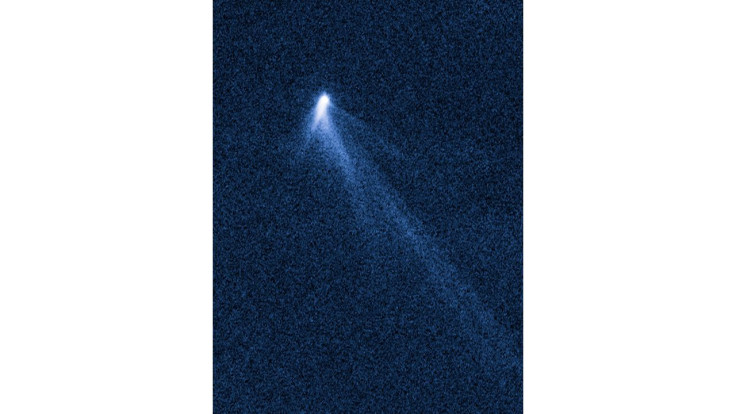NASA Baffled By ‘Weird And Freakish’ Asteroid

A strange asteroid spotted through the Hubble Space telescope has baffled NASA scientists. According to the scientists, the asteroid had strange tails made of dust.
The strange asteroid has been identified as P/2013 P5. According to NASA, the cosmic object’s appearance surprised scientist because it looked more like a comet than an asteroid.
According to the space agency, the asteroid has about six dust tails that seemed to have formed sequentially. Due to the appearance of the tails, the asteroid rotates in a strange manner.
“Astronomers using NASA’s Hubble Space Telescope have identified what they can only describe as a never-before-seen ‘weird and freakish’ object in the asteroid belt that looks like a rotating lawn sprinkler,” the agency said in a statement.
Aside from its strange appearance and movement, another factor that baffled scientists was how the structures of the tails changed. As shown in the photos taken by Hubble, the tails of P/2013 P5 became shorter and a bit more defined a few days after it was first spotted.
“We were literally dumbfounded when we saw it,” astronomer David Jewitt said in a statement. “Even more amazing, its tail structures change dramatically in just 13 days as it belches out dust. That also caught us by surprise. It’s hard to believe we’re looking at an asteroid.”
According to NASA, the asteroid’s strange appearance may have been caused by its rotation. As the spin of the space rock increased, its surface began to break apart. This caused dust and other debris to fly away from the asteroid, which led to the appearance of tails.
NASA noted that this will only happen if the asteroid’s rotation is fast enough. According to the agency, this may have been caused by the pressure exerted by the Sun via sunlight on the body of the asteroid. As one side of the asteroid’s surface heats up, the entire space rock could begin rotating rapidly.
Since P/2013 P5’S rotation and fragmentation was caused by natural forces, Jewitt believes this is a common phenomenon. This means there are other asteroids in space that are similar to P/2013 P5.
“In astronomy, where you find one, you eventually find a whole bunch more,” he said. “This is just an amazing object to us, and almost certainly the first of many more to come.”
© Copyright IBTimes 2024. All rights reserved.





















